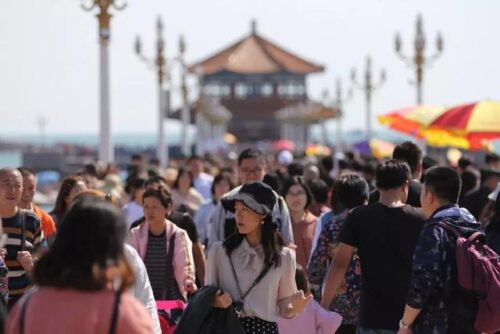>>REAL-TIME UPDATES IN THE WIRE. CLICK HERE<<<
China recorded 826 million tourist trips during the eight-day Mid-Autumn Festival and National Day holidays, rising by 71.3% from a year earlier and rising by 4.1% from the same period in 2019, said the Ministry of Culture and Tourism.
The tourists spent a total of 753.4 billion yuan during the holiday, rising by 129.5% from a year earlier and up 1.5% from the 2019-level, showed the data.
Separate data from the Ministry of Transport showed that China’s human mobility during the holiday reached 2.2 billion, with an average of 275 million per day, surging 67.6% from the same period in 2022.
The average daily railway passenger trips during the holiday was closed to 16 million, about twice the level seen in the Spring Festival this year, showed the data.
China’s inbound and outbound trips surged during the eight-day Golden Week holiday this year, reaching 85% of their pre-pandemic level but lower than an earlier government estimate.
The average daily number of inbound and outbound passenger trips a day reached 1.477 million during the holiday which ended on Friday, the National Immigration Administration said.
That’s surging about 2.9 times from the same period last year and equivalent to 85.1% of the number of average trips made in the same period in 2019, and nearly quadruple the 2022 average, it said. It had earlier expected an average of 1.58 million daily inbound and outbound passenger trips during the holiday.
According to flight information platform Hangban Guanjia, China’s outbound passenger flight volume reached 4,835 during the holiday, reaching 55.5% of the levels seen in the same period in 2019.
Data from online travel agency Qunar.com showed that the booking volume for hotels in popular Chinese cities surged two times from the pre-pandemic level, while data from Tongcheng Travel showed that the booking volume for flight tickets, train ticket and scenic spot tickets all hit the highest in five years.
According to online travel agency Trip.com, the booking volume from domestic and overseas travel products during the holiday surged nearly two times and more than eight times, respectively, compared to a year earlier.

